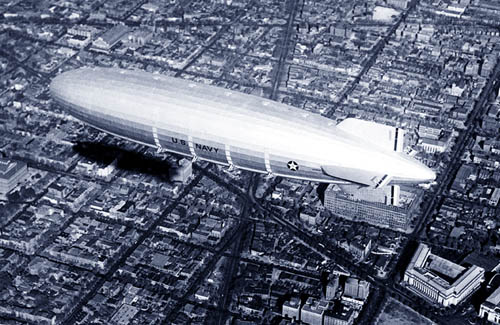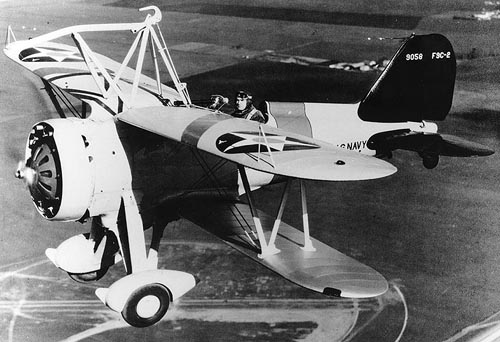The Life and Death of the Akron
Today, the life and the death of the Akron. The University of Houston's College of Engineering presents this series about the machines that make our civilization run, and the people whose ingenuity created them.
We've heard so much about the Hindenburg: How the great hydrogen-filled dirigible caught fire in Lakehurst, New Jersey -- how that spelled the end of the hydrogen dirigible. Few of us are aware that a British dirigible crashed and burned in France, seven years earlier, with a much greater loss of life.
Nor are we very aware that a helium-filled American dirigible, almost as large as the Hindenburg, was wrecked four years before the Hindenburgburned, with twice the loss of life. The burning of the Hindenburg in 1937 was, in fact, a last gasp of a dying technology.
That British dirigible, the R101, had been one of a pair of large airships. By the time it burned, the American Navy had already turned to helium for its big airships. Helium is inert, and it was plentiful in Kansas and Colorado.
However, consider this: The molecular weights of hydrogen, he-lium, and air are two, four, and twenty-nine. Helium is twice the weight of hydrogen, so we lose roughly seven percent of our lifting ability when we switch from hydrogen to helium. A helium dirigible has to be seven percent larger, to lift the same load.
That loss was offset by a subtler advantage, related to helium's non-flammability. Gasbags in a hydrogen dirigible had to be kept away from anything that might trigger combustion with oxygen in the surrounding air. In a helium dirigible, active equipment could be placed inside the huge cigar-shaped body. The diesel engines, for example, didn't have to be mounted in external pods.
So the Goodyear Company set out, in 1924, to build two great sister dirigibles for the Navy -- the Akron and the Macon. Only a tad smaller than the Hindenburg, they could actually function as embryonic aircraft carriers.Each could carry four Curtis Sparrowhawk biplanes. They were launched and retrieved by means of a trapeze apparatus, which swung out below the dirigible.
A Goodyear booklet, put out in 1925 and then renewed annually, celebrates the construction of these once-largest dirigibles in the world. It lovingly displays their light, almost buoyant, duralumin frame. It boasts how their propellers could be swung 180-degrees, to reverse the dirigible's direction. But the booklet keeps quiet about their airplane-carrying ability.
Nor does it speak of the delicacy of those early dirigibles in a gale. In 1933, a storm caught the Akron off the coast of New Jersey. The resulting crash killed 78 people. Two years later, a storm caught the Macon off Big Sur, California. Only two people died that time, but the Navy gave up on dirigibles.
Only after all that, did the Hindenburg burn. And it did so with a surprisingly small loss of life. However dramatic that disaster was made by the new radio, and by the new movie newsreels, it only underscored the passing of a dying technology. Dirigibles simply were not yet robust enough to survive -- at least back then, in the 1920s and '30s.
I'm John Lienhard, at the University of Houston, where we're interested in the way inventive minds work.
H. Allen, The Story of the Airship. Akron, OH: The Goodyear Tire & Rubber Co., 1925 (1931 ed.) (My thanks to Sims McCutchan for lending me this remarkable old book.)

The Akron in flight over Washington, DC (from a Library of Congress photo)

A Sparrowhawk in flight, photographed from the Macon (U.S. Navy Photo)